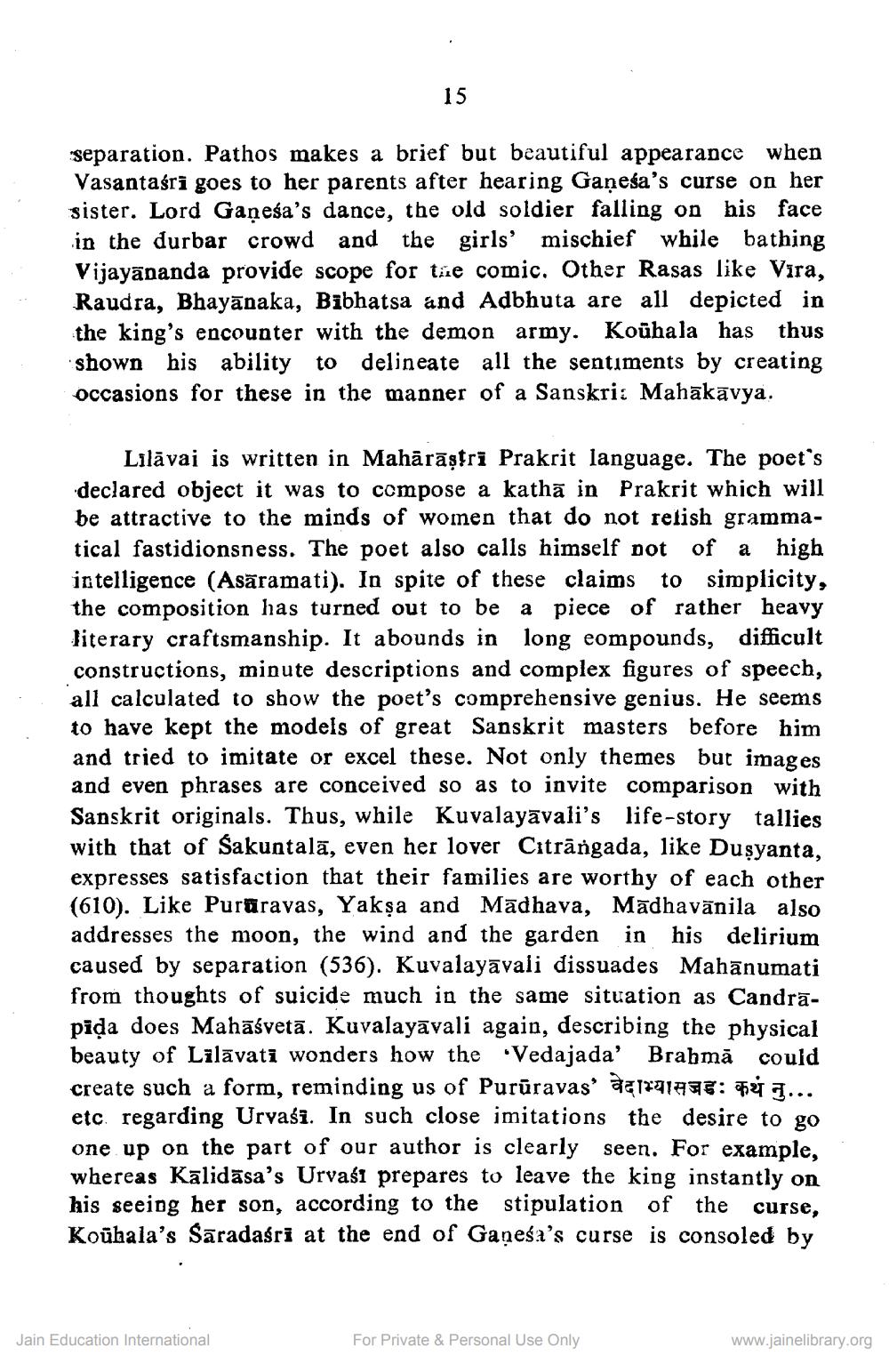________________
15
separation. Pathos makes a brief but beautiful appearance when Vasantaśri goes to her parents after hearing Ganesa's curse on her sister. Lord Gaṇeśa's dance, the old soldier falling on his face in the durbar crowd and the girls' mischief while bathing Vijayananda provide scope for the comic. Other Rasas like Vira, Raudra, Bhayanaka, Bibhatsa and Adbhuta are all depicted in the king's encounter with the demon army. Kouhala has thus shown his ability to delineate all the sentiments by creating occasions for these in the manner of a Sanskri: Mahākāvya.
Lilāvai is written in Mahārāṣṭrī Prakrit language. The poet's declared object it was to compose a katha in Prakrit which will be attractive to the minds of women that do not refish grammatical fastidionsness. The poet also calls himself not of a high intelligence (Asaramati). In spite of these claims to simplicity, the composition has turned out to be a piece of rather heavy literary craftsmanship. It abounds in long compounds, difficult constructions, minute descriptions and complex figures of speech, all calculated to show the poet's comprehensive genius. He seems to have kept the models of great Sanskrit masters before him and tried to imitate or excel these. Not only themes but images and even phrases are conceived so as to invite comparison with Sanskrit originals. Thus, while Kuvalayāvali's life-story tallies with that of Sakuntala, even her lover Citrangada, like Dusyanta, expresses satisfaction that their families are worthy of each other (610). Like Pururavas, Yakṣa and Madhava, Madhavanila also addresses the moon, the wind and the garden in his delirium caused by separation (536). Kuvalayāvali dissuades Mahanumati from thoughts of suicide much in the same situation as Candrapiḍa does Mahāśvetā. Kuvalayavali again, describing the physical beauty of Lilavatī wonders how the Vedajada' Brahma could create such a form, reminding us of Pururavas' ag1291978: FÅ J....... etc regarding Urvasi. In such close imitations the desire to go one up on the part of our author is clearly seen. For example, whereas Kalidasa's Urvası prepares to leave the king instantly on his seeing her son, according to the stipulation of the curse, Kouhala's Saradaśrī at the end of Gaṇeśa's curse is consoled by
Jain Education International
For Private & Personal Use Only
www.jainelibrary.org




